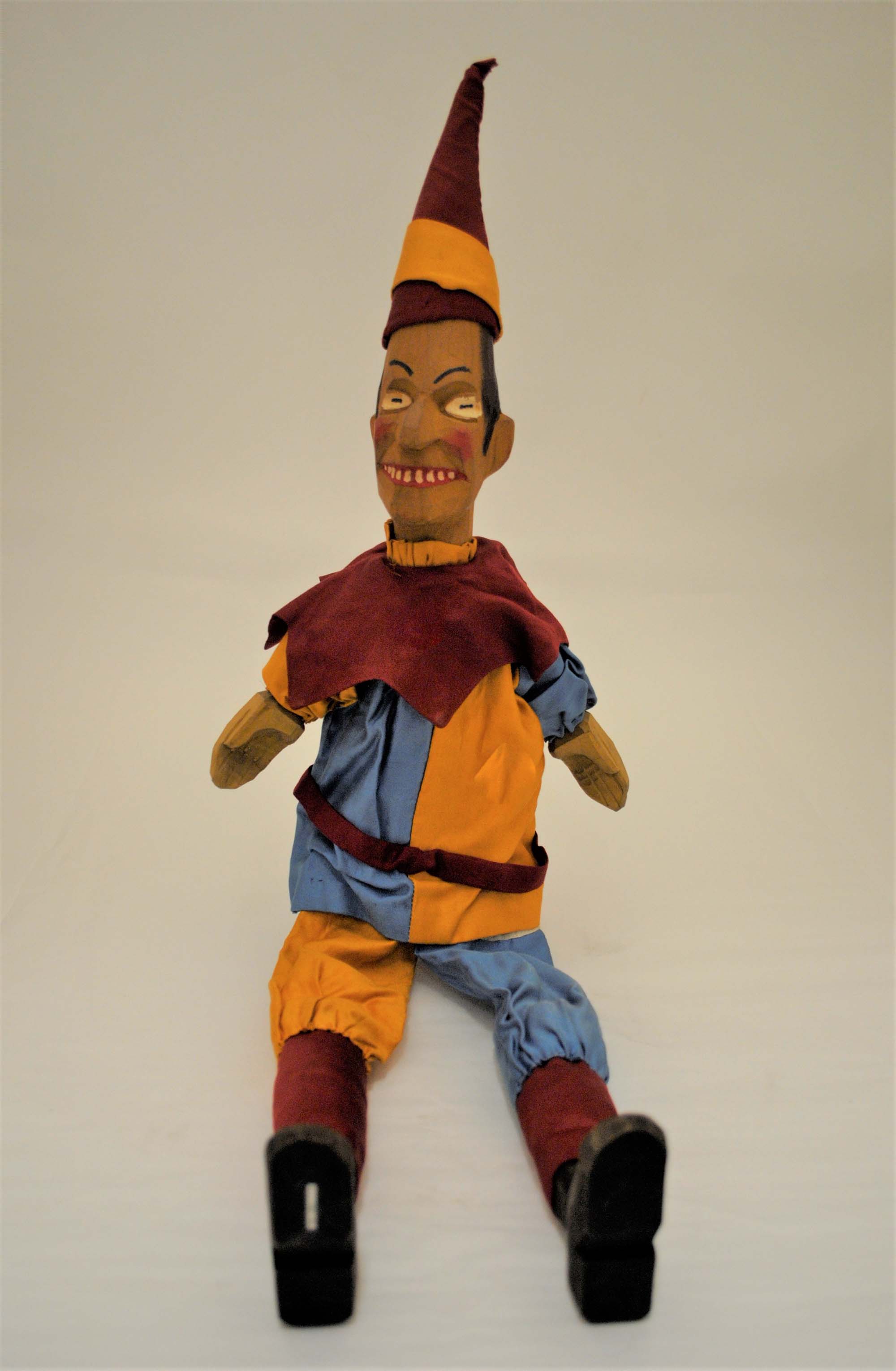Global Leicester: German Puppets
“I take it, that he who invented puppet-shows was a greater benefactor to his species than he who invented operas”
Hazlitt
Published: 17 March 2021

I would like to start this journey into the Dryad collection with an object that represents an important part of Harry Peach’s life: his link with German culture. Harry was particularly interested in the German design reform, that began in 1907 with the foundation of the Deutscher Werkbund (German Applied Arts) association in Munich, and the debate about the goal of applied arts. He was fluent in German, and used to travel to Germany frequently during the period of the Weimar Republic to visit design fairs and international exhibitions. It is likely that this puppet was purchased in one of these events, which Harry documents in the correspondence held at the Archives and Special Collections of David Wilson Library, and therefore travelled to Leicester. Among the shelves of the Leicester Museum and Art Gallery’s storage we can find different wooden objects from Germany, from butter moulds to spoons and confectionary stamps. But what caught my attention the most is the substantial number of glove puppets, representing a policeman, a queen and a king, a witch, villains just to mention some.
This one in the picture is a puppet of Kasperle, a self-determined, puppet representation of the urban everyman, as well as the most prominent puppet character in Germany and Austria. The fascinating world of the puppets had certainly appeal a lover of Arts and Crafts such as Harry Peach, and their presence in the collection can be explained by Harry’s interest in education. In fact, following the reform of theatre at the beginning of the 20th century, which recognised the artistic value of puppet theatres, the educational puppetry movement grew. One of the ideas of the movement was to use the figure of Kasperle as a tool for social change, a propagandist of the good behaviour who, consequently, had access to associations and schools in different guise (1). Here Peach witnesses his visit to a school in Berlin:
Went to a most interesting little examination of pupil teachers’ handwork, which was a very nice lot of stuff. Pallat, of the Prussian Education Department invited me. All the teachers had puppets of Punch and Judy amongst their test work, and they are apparently used a good deal in the schools.(2)
In the Prussian schools of the 1920s, pupil teachers had to make a little Kasperle-theatre (Punch and Judy show) as one of the things for their exam. Puppets were considered useful for raising children’s attention, and to tell stories in a catchy way. They are a crucial part of German heritage still now, as we can find museums dedicated to glove and string puppets all around the country, like the Puppentheatermuseu in Munich, the Puppentheater-Museum in Berlin, and the Lübeck Museum of Theatre Puppets. My insight is that Harry collected puppets from Germany that would serve as a good example not only for replicating puppet shows at school, but also as instrumental for children to learn how to create puppets and puppet shows. In fact, there are a few leaflets from the Dryad press which describe the process of engaging children in making puppets using different fabric materials, and organising the show. I guess that some children loved this ‘responsibility’, and maybe this is a good method not to make children nervous for the performance, as the puppets alone are seen?
Maria Chiara Scuderi
1 World Encyclopedia of Puppetry Arts, consulted at wepa.unima.org/en/germany/
2 Archives and Special Collections of David Wilson Library, ACC 2014/5, box 2. Correspondence Peach-Fletcher, letter dated 13 March 1925.
Learn more about Harry Peach and the Dryad Collection on our Arts & Crafts website

